-
 Bitcoin
Bitcoin $115100
-2.99% -
 Ethereum
Ethereum $3642
-1.38% -
 XRP
XRP $3.027
-5.51% -
 Tether USDt
Tether USDt $1.000
-0.05% -
 BNB
BNB $763.4
-1.32% -
 Solana
Solana $177.2
-5.42% -
 USDC
USDC $0.9999
-0.02% -
 Dogecoin
Dogecoin $0.2247
-6.47% -
 TRON
TRON $0.3135
0.23% -
 Cardano
Cardano $0.7824
-4.46% -
 Hyperliquid
Hyperliquid $42.53
-0.97% -
 Stellar
Stellar $0.4096
-6.09% -
 Sui
Sui $3.662
-2.61% -
 Chainlink
Chainlink $17.63
-3.57% -
 Bitcoin Cash
Bitcoin Cash $536.3
2.94% -
 Hedera
Hedera $0.2450
0.34% -
 Avalanche
Avalanche $23.23
-3.15% -
 Litecoin
Litecoin $112.2
-1.23% -
 UNUS SED LEO
UNUS SED LEO $8.976
-0.30% -
 Shiba Inu
Shiba Inu $0.00001341
-2.72% -
 Toncoin
Toncoin $3.101
-2.44% -
 Ethena USDe
Ethena USDe $1.001
-0.05% -
 Uniswap
Uniswap $10.08
-1.97% -
 Polkadot
Polkadot $3.938
-2.77% -
 Monero
Monero $323.9
0.87% -
 Dai
Dai $0.9999
-0.02% -
 Bitget Token
Bitget Token $4.481
-1.69% -
 Pepe
Pepe $0.00001199
-5.94% -
 Aave
Aave $288.2
-0.68% -
 Cronos
Cronos $0.1279
0.36%
Selection of accurate entry points when the butterfly pattern is completed
The butterfly pattern is a precise harmonic setup in crypto trading that signals trend reversals using Fibonacci levels, with entry confirmed at point D through price action and confluence for high-probability trades.
Jul 24, 2025 at 08:43 pm
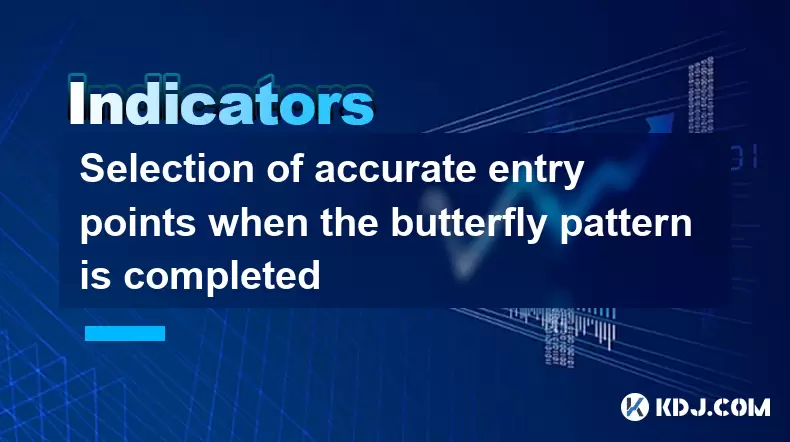
Understanding the Butterfly Pattern in Cryptocurrency Trading
The butterfly pattern is a harmonic chart pattern widely used by technical traders in the cryptocurrency market to identify potential reversal zones. It is part of a broader family of harmonic patterns, which rely on Fibonacci retracement and extension levels to predict price movements. The butterfly pattern typically forms at the end of a trend and signals a high-probability reversal. It consists of five key points labeled X, A, B, C, and D, with specific Fibonacci ratios governing the distances between these points. Traders use this structure to anticipate where the price may reverse, allowing them to enter trades with defined risk and reward parameters.
The completion of the butterfly pattern occurs at point D, which is considered the Potential Reversal Zone (PRZ). This zone is calculated using Fibonacci extensions from prior swings, particularly the XA leg. For a bearish butterfly, point D is derived from a 1.272 or 1.618 extension of the XA leg, while the AB=CD pattern often supports this level. Accurate identification of this point is essential for setting up high-confidence trades.
Key Fibonacci Levels in the Butterfly Structure
To correctly identify the butterfly pattern, traders must validate each leg using precise Fibonacci measurements. The following conditions must be met:
- AB retrace of 0.786 of XA
- BC retrace between 0.382 and 0.886 of AB
- CD extension of 1.618 to 2.618 of BC
- D point must align with a 1.272 or 1.618 extension of XA
These ratios are non-negotiable for a valid butterfly setup. Misalignment in any of these levels may result in a failed pattern, leading to false entries. When all Fibonacci conditions converge near point D, the probability of a successful reversal increases significantly. Traders often use tools like the Fibonacci retracement and extension tools available on platforms such as TradingView or MetaTrader to measure these levels accurately.
It is critical to ensure that the D point coincides with confluence factors such as previous support/resistance levels, order block areas, or liquidity zones. This confluence strengthens the validity of the entry signal and reduces the likelihood of entering a trade based solely on a pattern that may not hold.
Confirming the Completion of the Butterfly Pattern
Recognizing when the butterfly pattern is complete requires more than just reaching the D point. Traders must look for price action confirmation before entering a trade. Common confirmation signals include:
- Bullish or bearish engulfing candlesticks at the D zone
- Pin bars or rejection wicks indicating strong rejection
- Inside bar breakouts following consolidation
- RSI or MACD divergence at the PRZ
For example, in a bearish butterfly, if the price reaches the D point and forms a strong bearish engulfing candle, it suggests sellers are in control. Conversely, in a bullish butterfly, a long wick down into the D zone followed by a close above the open indicates buyer interest. These candlestick patterns should align with the expected direction of the reversal predicted by the butterfly structure.
Additionally, volume analysis can enhance confirmation. A spike in volume at point D supports the legitimacy of the reversal. In low-volume environments, especially in less liquid altcoins, false breakouts are more common, making confirmation even more crucial.
Setting Accurate Entry Points at Pattern Completion
Once the butterfly pattern is confirmed, determining the exact entry point becomes the next critical step. The ideal entry is not necessarily at the exact D level but slightly after confirmation. The following steps outline a precise entry strategy:
- Wait for price to reach the 1.272 or 1.618 XA extension zone
- Observe for reversal candlestick patterns (e.g., engulfing, pin bar)
- Enter on the close of the confirmation candle or the open of the next candle
- Place the entry order as a limit order just beyond the confirmation candle’s close
For a short entry in a bearish butterfly, place a sell limit order just below the low of the engulfing candle. For a long entry in a bullish butterfly, place a buy limit order just above the high of the bullish rejection candle. This method ensures that traders are not entering prematurely and are instead reacting to actual market acceptance of the reversal.
Using limit orders also helps avoid slippage, especially in volatile crypto markets where prices can gap quickly. Market orders should be avoided unless in high-frequency scalping scenarios with tight spreads.
Stop Loss and Take Profit Placement Strategy
Risk management is vital when trading harmonic patterns. Even with a high-probability setup like the butterfly, stop losses must be placed strategically. The stop loss should be positioned just beyond the D point to allow for minor overshoots, which are common in crypto due to volatility.
- For a long trade, place the stop loss below the low of the D candle
- For a short trade, place the stop loss above the high of the D candle
- Use a 1:2 or 1:3 risk-reward ratio when setting take profit levels
Take profit targets can be based on key Fibonacci retracement levels of the XA leg. Common targets include:
- TP1 at 0.382 retracement of XA
- TP2 at 0.618 retracement of XA
- TP3 at 1.00 (full retracement) of XA
Partial profits can be taken at each level, allowing traders to secure gains while letting the remainder of the position run. Trailing stops can also be used on the remaining portion to capture extended moves.
Backtesting and Validating Butterfly Setups
Before applying the butterfly pattern in live trading, thorough backtesting is essential. Select historical data from major cryptocurrencies like BTC/USDT or ETH/USDT and manually identify butterfly patterns. Validate each setup using the Fibonacci rules and assess how price reacted at point D.
Use charting software with drawing tools and replay mode to simulate real-time decision-making. Record the outcomes of each trade, noting whether the entry was successful, the stop loss was hit, or the pattern failed. Over time, this process builds confidence in recognizing valid setups and improves timing accuracy.
Backtesting should include various market conditions—trending, ranging, and volatile periods—to ensure the strategy performs across different environments. Pay attention to false breakouts and whipsaws, which are common in crypto markets due to their 24/7 nature and susceptibility to news events.
Frequently Asked Questions
What timeframes are best for identifying butterfly patterns in crypto trading?
The 1-hour, 4-hour, and daily charts are most effective for spotting reliable butterfly patterns. Lower timeframes like 5-minute or 15-minute charts often produce false signals due to noise and volatility. Higher timeframes provide clearer structure and stronger confluence with key levels.
Can the butterfly pattern be automated using bots or scripts?
Yes, some trading bots support harmonic pattern detection, including the butterfly. However, automated detection may generate false positives. It is recommended to use bots for alerting purposes only and perform manual verification before executing trades.
How do you differentiate a butterfly pattern from a Gartley or Crab pattern?
The key difference lies in the D point extension. In a butterfly, D extends beyond the X level (1.272–1.618 XA), while in a Gartley, D stays within the XA range (0.786 retracement). The Crab pattern has a deeper BC leg and a 1.618–2.618 extension of BC, but its D point aligns with a 1.618 XA extension, similar to the butterfly.
Is the butterfly pattern effective in sideways markets?
The butterfly pattern works best in trending or overextended markets where a reversal is likely. In sideways or choppy markets, the pattern often fails due to lack of directional momentum. Always assess the broader market context before trading the pattern.
Disclaimer:info@kdj.com
The information provided is not trading advice. kdj.com does not assume any responsibility for any investments made based on the information provided in this article. Cryptocurrencies are highly volatile and it is highly recommended that you invest with caution after thorough research!
If you believe that the content used on this website infringes your copyright, please contact us immediately (info@kdj.com) and we will delete it promptly.
- Cloud Mining, Stable Funds, and the Coin Market: Navigating the Crypto Landscape in 2025
- 2025-07-26 01:30:11
- Altcoins, Bitcoin, Buy Now: Navigating the Crypto Surge Like a New Yorker
- 2025-07-26 02:10:17
- Shiba Inu Price Prediction: Will the Memecoin Surge Continue?
- 2025-07-26 02:10:17
- Cryptos, Nexchain, SpacePay: The NYC Lowdown on 2025's Presale Scene
- 2025-07-26 02:15:28
- Crypto ETFs: Analyzing the 2025 Boom and Beyond
- 2025-07-26 00:30:12
- Crypto Coins, Bull Run, Dominance: What's Shakin' in 2025?
- 2025-07-26 02:15:28
Related knowledge

Does the golden cross of the KDJ three lines at the annual line level indicate a turning point in the big cycle?
Jul 26,2025 at 01:35am
Understanding the KDJ Indicator in Cryptocurrency TradingThe KDJ indicator is a momentum oscillator widely used in technical analysis, especially with...
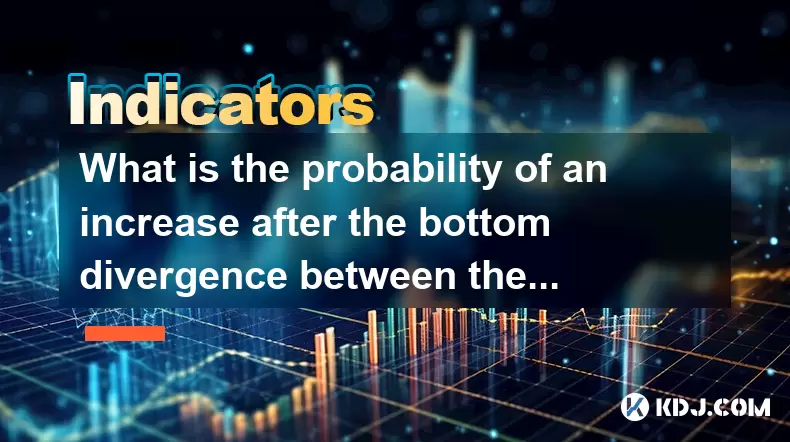
What is the probability of an increase after the bottom divergence between the KDJ indicator and the trading volume?
Jul 26,2025 at 01:29am
Understanding KDJ Indicator and Its Role in Technical AnalysisThe KDJ indicator is a momentum oscillator widely used in cryptocurrency trading to iden...
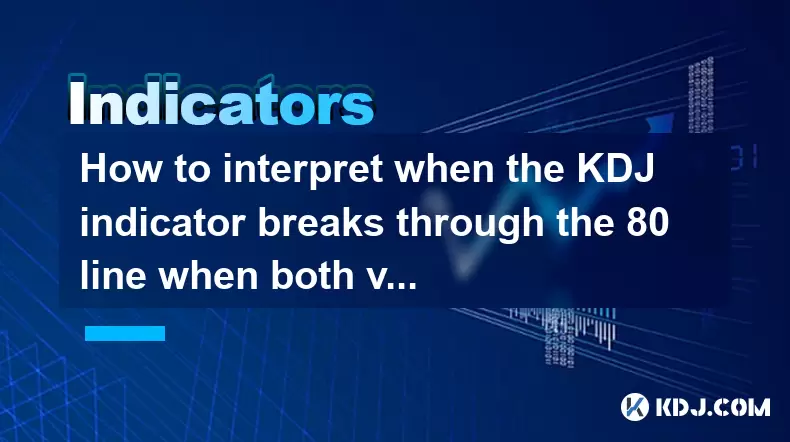
How to interpret when the KDJ indicator breaks through the 80 line when both volume and price rise?
Jul 26,2025 at 12:47am
Understanding the KDJ Indicator and Its ComponentsThe KDJ indicator is a momentum oscillator widely used in technical analysis within the cryptocurren...
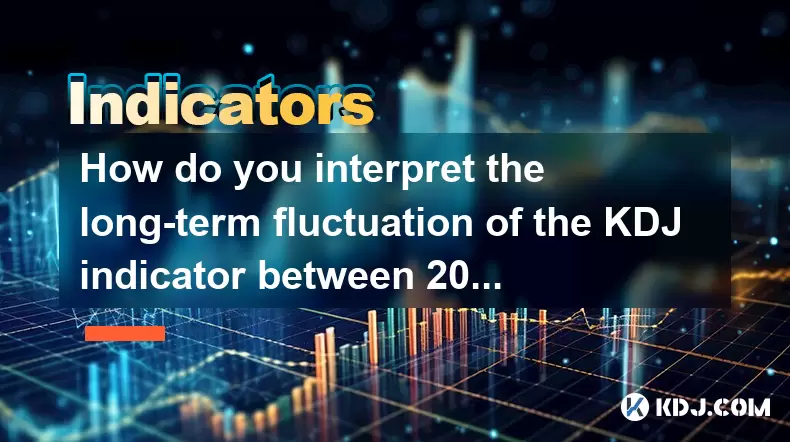
How do you interpret the long-term fluctuation of the KDJ indicator between 20-80?
Jul 26,2025 at 01:42am
Understanding the KDJ Indicator in Cryptocurrency TradingThe KDJ indicator is a momentum oscillator widely used in technical analysis, especially with...
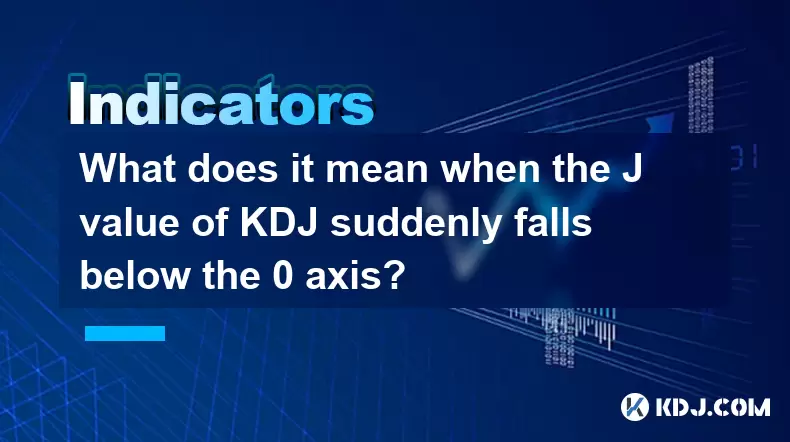
What does it mean when the J value of KDJ suddenly falls below the 0 axis?
Jul 26,2025 at 12:01am
Understanding the KDJ Indicator in Cryptocurrency TradingThe KDJ indicator is a momentum oscillator widely used in cryptocurrency trading to identify ...

How to interpret that the KDJ D line is downward for a long time but the price is sideways?
Jul 25,2025 at 07:00pm
Understanding the KDJ Indicator and Its ComponentsThe KDJ indicator is a momentum oscillator widely used in cryptocurrency trading to assess overbough...

Does the golden cross of the KDJ three lines at the annual line level indicate a turning point in the big cycle?
Jul 26,2025 at 01:35am
Understanding the KDJ Indicator in Cryptocurrency TradingThe KDJ indicator is a momentum oscillator widely used in technical analysis, especially with...

What is the probability of an increase after the bottom divergence between the KDJ indicator and the trading volume?
Jul 26,2025 at 01:29am
Understanding KDJ Indicator and Its Role in Technical AnalysisThe KDJ indicator is a momentum oscillator widely used in cryptocurrency trading to iden...

How to interpret when the KDJ indicator breaks through the 80 line when both volume and price rise?
Jul 26,2025 at 12:47am
Understanding the KDJ Indicator and Its ComponentsThe KDJ indicator is a momentum oscillator widely used in technical analysis within the cryptocurren...

How do you interpret the long-term fluctuation of the KDJ indicator between 20-80?
Jul 26,2025 at 01:42am
Understanding the KDJ Indicator in Cryptocurrency TradingThe KDJ indicator is a momentum oscillator widely used in technical analysis, especially with...

What does it mean when the J value of KDJ suddenly falls below the 0 axis?
Jul 26,2025 at 12:01am
Understanding the KDJ Indicator in Cryptocurrency TradingThe KDJ indicator is a momentum oscillator widely used in cryptocurrency trading to identify ...

How to interpret that the KDJ D line is downward for a long time but the price is sideways?
Jul 25,2025 at 07:00pm
Understanding the KDJ Indicator and Its ComponentsThe KDJ indicator is a momentum oscillator widely used in cryptocurrency trading to assess overbough...
See all articles

























































































